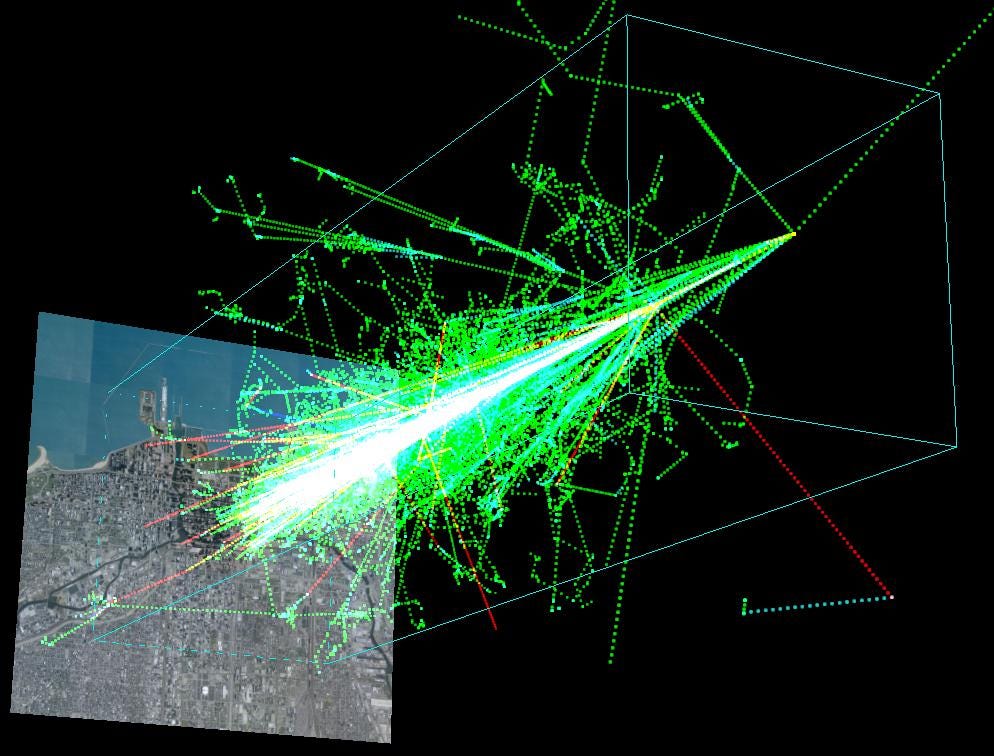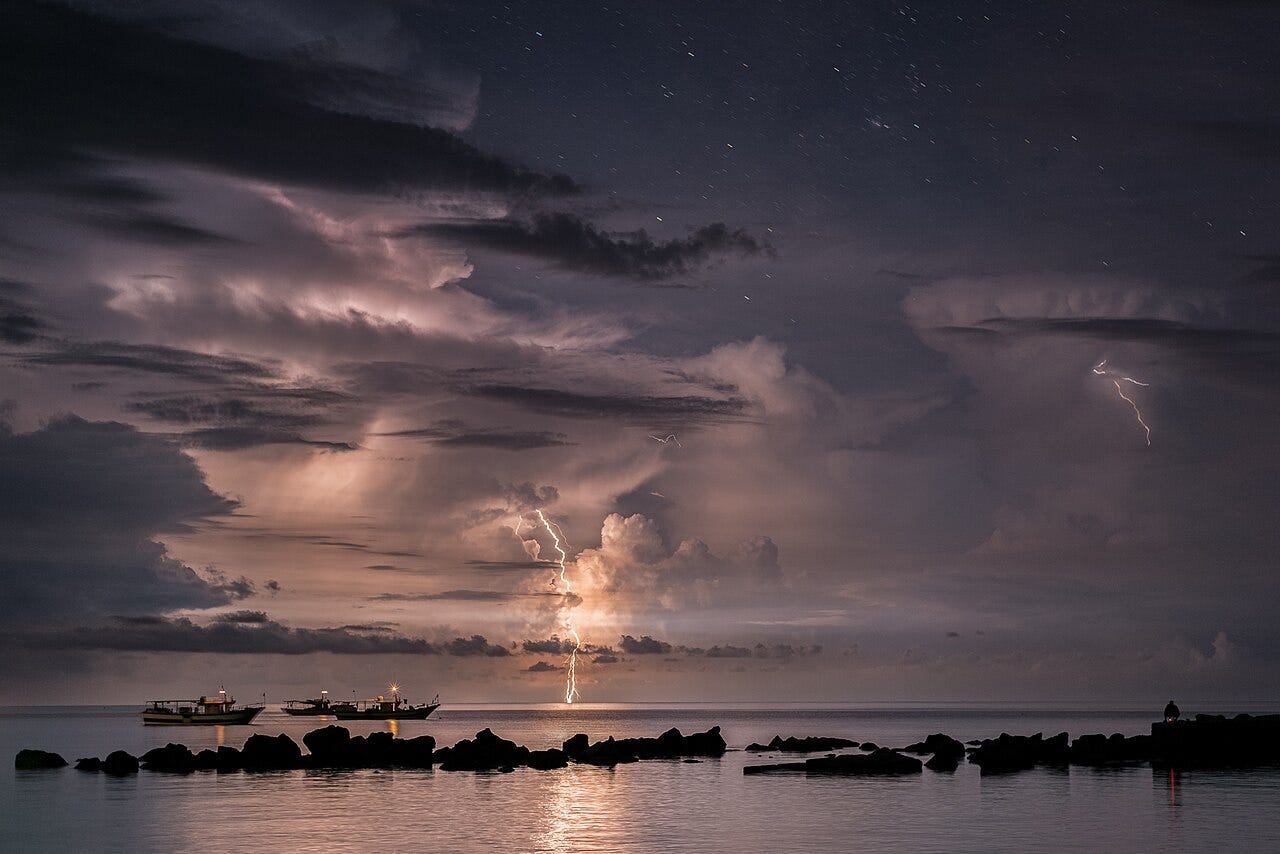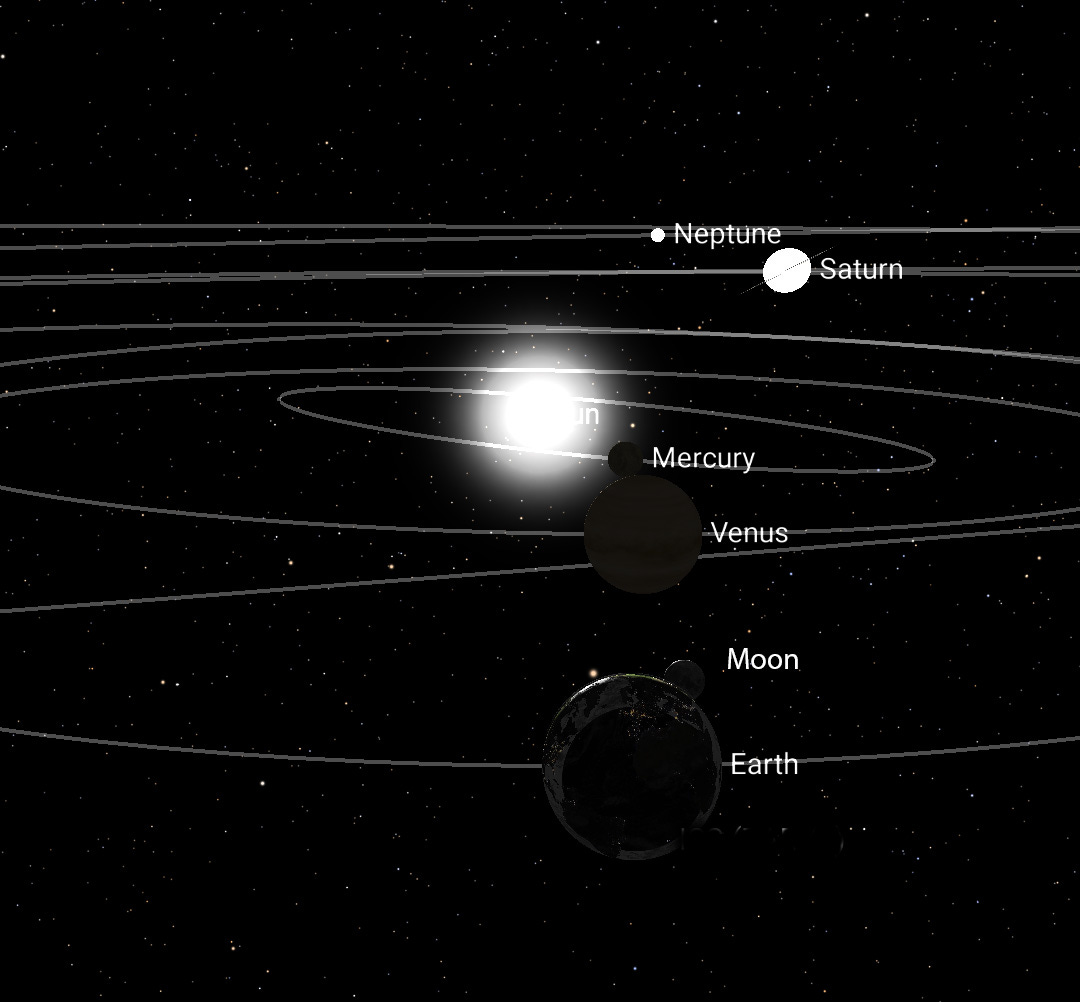Amidst the chaotic headlines last week, the news you probably didn’t hear is that scientists have effectively confirmed that cosmic rays spark lightning.
I want to share why I find this absolutely wondrous, which means I first need to try to describe some physics at the boundaries of my understanding.
There is a problem with lightning.
The problem is that it shouldn’t actually happen.
Storm clouds generate massive electrical potentials, as illustrated by Ben Franklin’s metal-stringed kite, but nowhere is the electric field strong enough to ionize the air and start a miles-long branching bolt. Something needs to create the initial spark, in the same way that a puddle of gasoline will just sit there all day until the tiniest ember or flame sets the whole thing kaboom.
Using precise radio-wave detection in three dimensions, scientists at Los Alamos National Laboratory have determined that the sparks are provided by cosmic rays.
“Cosmic rays” are not actually rays, for the most part. They are atomic-scale particles traveling at incredible speeds and carrying impressive amounts of energy, that break apart whatever matter they happen to collide with. They are not very kind to DNA and other molecules of the human body, and they are one of the main reasons why our bodies do not belong in space. Our Sun sends out lots of them, especially when it flares, creating the Aurora Borealis, but these are not the ones that trigger lightning.
The particles that trigger lightning are much stronger, arriving with the energy of a falling raindrop or a small hailstone packed into a single proton. They are accelerated by supernovas and star collisions and black holes all across our galaxy, and the most powerful ones arrive from distant galaxies all across the universe, accelerated to energy levels that particle physicists can only dream of by mysterious processes no one understands.
When these extra-powerful particles collide with atoms in the atmosphere, at a rate of about 15 per square mile per second, they generate a chain reaction of nuclear physics, each impact creating more particles like a series of billiard breaks until over a million balls are in motion and the energy has finally been exhausted. This is called an “air shower”, and it’s happening all around us all of the time, and it’s how our atmosphere protects our bodies and all life on Earth. If the particles all glowed green it would look something like this:

When this happens within the electric field of a storm cloud, it gets amplified - more particles are produced - and positively- and negatively-charged particles are deflected in opposite directions. The air is thus ionized and electrified in a small area, effectively creating a “spark” - and if the field is strong enough it then continues to propagate and branch following the gradient of charge, growing exponentially to carry all of the stored electrical energy. Flash. Boom. Lightning!
Lightning is triggered by particles with as much energy as a single raindrop.
Lightning is triggered by particles from star explosions across the galaxy and cataclysmic events across the universe.
Exactly when and where lightning strikes is determined by information transmitted across thousands to millions of light-years.
Once a bolt is ignited, the initial interstellar “spark” is amplified ten trillion times, limited only by the energy in the storm.
Everything is interconnected.
We are only just beginning to understand.
A real planetary alignment
A month ago the headlines declared that seven planets were aligning in the evening sky. In reality they were not in a line in three dimensions, just clustered on one side of the sun within the plane of the Solar System.
This week they are actually lining up. For a couple of days, we have - in order - Earth, Moon, Venus, Mercury, Sun, Saturn, Neptune - all in sequence. Because the Sun is part of the line, the Sun is all that we can see - with the exception of folks in Maine and Newfoundland and Greenland who will see an almost-total solar eclipse on Saturday morning when Earth, Moon, and Sun align more perfectly.
Of the visible planets, only Mars, Jupiter, and Uranus are not participating - they’re still in the evening sky after sunset. As with any alignment, what does it mean? I can’t say, but everything is interconnected, and the gravitational pulls and electromagnetic interactions of our planetary family are orders of magnitude stronger than the cosmic rays that trigger lightning. I am sure we would feel it, or see it, if only we knew where and how to look.






Lightning!!!!! Mystery!!! Cosmo-ecologies of inexplicable interbeing 🤩 thank you for your devotion to these conversations, it is a non-linear realm I long to spend more time in.
I had been contemplating what I loved so much about this piece, and it struck me (no pun intended ⚡️⚡️) how much the larger cosmos can be perceived in the same way we perceive the human body. I was thinking of the Earth as a single cell with countless moving parts, receiving impulses, energy, electricity, from a larger context. Participant in a larger context where energy is exchanged, received. This is a thought I have had before, that I return to over and over again. Your essay really highlights this micro-macro view of things. So helpful for widening the lens of our perception 🙏🏼